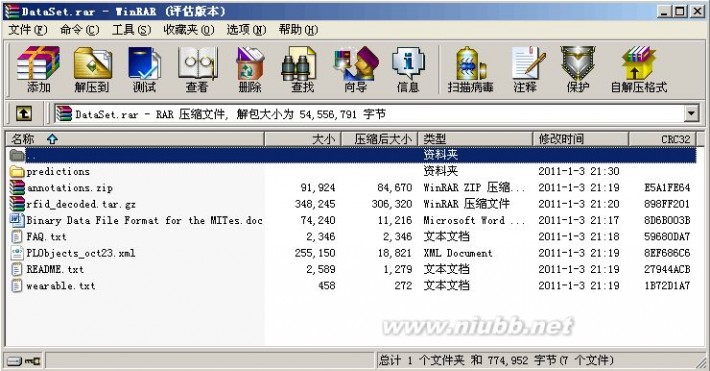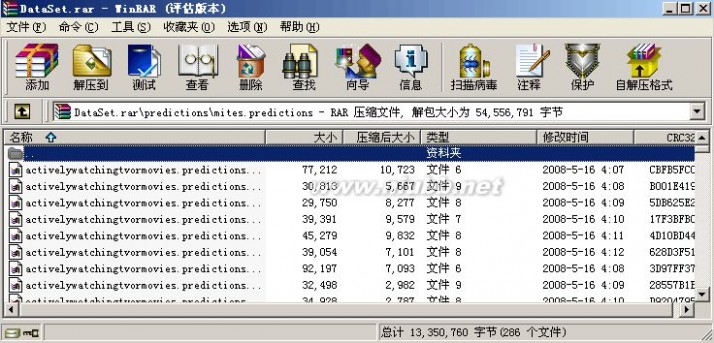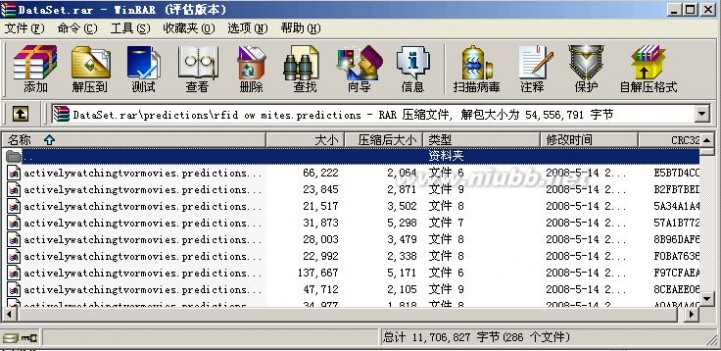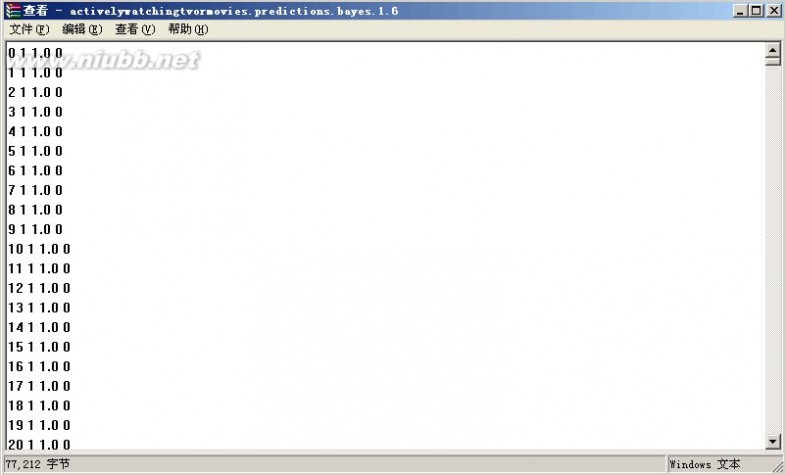一 : 自然语言处理_汉语词频表--根据《现代汉语频率词典》输入
汉语词频表--根据《现代汉语频率词典》输入
数据摘要:
根据《现代汉语频率词典》输入的汉语使用频率统计数据。
中文关键词:
汉语,词频表,频率,词典,输入,
英文关键词:
Chinese,Frequency table,Frequency,Dictionary,Input,
数据格式:
TEXT
数据用途:
统计汉字使用频率,中文信息处理,汉字编码
数据详细介绍:
PlaceLab Couple Dataset
Overview of the PLCouple Dataset
This is about one month of all non-identifying data from a 2.5 month stay in the PlaceLab of a couple. We cannot provide audio and video because it could reveal the identity of the participants.
二 : 频率词典:频率词典-频率词典,频率词典-正文
一种按词出现频率的高低而编排的词典,具有概率统计意义。
现代汉语频率词典_频率词典 -频率词典
[www.61k.com)现代汉语频率词典_频率词典 -正文
按词出现频率的高低而编排的词典。现代汉语频率词典_频率词典 -配图
现代汉语频率词典_频率词典 -相关连接
三 : 自然语言处理_汉语词频表--根据《现代汉语频率词典》输入
汉语词频表--根据《现代汉语频率词典》输入
数据摘要:
根据《现代汉语频率词典》输入的汉语使用频率统计数据。[www.61k.com]
中文关键词:
汉语,词频表,频率,词典,输入,
英文关键词:
Chinese,Frequency table,Frequency,Dictionary,Input,
数据格式:
TEXT
数据用途:
统计汉字使用频率,中文信息处理,汉字编码
数据详细介绍:
PlaceLab Couple Dataset
Overview of the PLCouple Dataset
This is about one month of all non-identifying data from a 2.5 month stay in the PlaceLab of a couple. We cannot provide audio and video because it could reveal the identity of the participants.
现代汉语频率词典 自然语言处理_汉语词频表--根据《现代汉语频率词典》输入
Sensors included are all the standard PlaceLab wired sensors, described here:
S. S. Intille, K. Larson, E. Munguia Tapia, J. Beaudin, P. Kaushik, J. Nawyn, and R. Rockinson, "Using a live-in laboratory for ubiquitous computing research," in Proceedings of PERVASIVE 2006, vol. LNCS 3968, K. P. Fishkin, B. Schiele, P. Nixon, and A. Quigley, Eds. Berlin Heidelberg: Springer-Verlag, 2006, pp. 349-365.
The mobile stick-on object usage and accelerometer-based sensors are called MITes and are described in this publication:
E. Munguia Tapia, S. S. Intille, L. Lopez, and K. Larson, "The design of a portable kit of wireless sensors for naturalistic data collection," in Proceedings of PERVASIVE 2006, vol. LNCS 3968, K. P. Fishkin, B. Schiele, P. Nixon, and A. Quigley, Eds. Berlin Heidelberg: Springer-Verlag, 2006, pp. 117-134.
The infrared MITes were developed as part of this work at MERL:
C. R. Wren and E. Munguia-Tapia, "Toward Scalable Activity Recognition for Sensor Networks," in Proceedings of The Second International Workshop in Location and Context-Awareness (LoCA '06), vol. 3987 / 2006, M. Hazas, J. Krumm, and T. Strang, Eds. Dublin, Ireland: Springer Berlin / Heidelberg, 2006, pp. 168-185.
RFID tagging is provided using the Intel RFID glove, described in this publication:
Philipose, M., Smith, J.R., Jiang, B., Mamishev, A., Roy, S., Sundara-Rajan, K., "Battery-free wireless identification and sensing." IEEE Pervasive Computing 4(1), 37–45 (2005)
About 100 hours of the data are annotated. The annotation was done using custom annotation software called Handlense []. Only the activity of the male subject was annotated. This paper has details about how the 100 hours of annotation was done:
B. Logan, J. Healey, Matthai Philipose, E. Munguia Tapia, and S. Intille, "A
long-term evaluation of sensing modalities for activity recognition," in Proceedings of the International Conference on Ubiquitious Computing, vol. LNCS 4717. Berlin Heidelberg: Springer-Verlag, 2007, pp. 483–500.
Directory Structure
现代汉语频率词典 自然语言处理_汉语词频表--根据《现代汉语频率词典》输入
The data can be (temporarily) found here: . Look at the README
Other Helpful Information
See a short and an example to decode the data format.
Acknowledgements:
The collection of this particular dataset was funded by Microsoft Research and the MIT House_n Consortium.
数据预览:


现代汉语频率词典 自然语言处理_汉语词频表--根据《现代汉语频率词典》输入



现代汉语频率词典 自然语言处理_汉语词频表--根据《现代汉语频率词典》输入

点此下载完整数据集
四 : 自然语言处理_汉语词频表--根据《现代汉语频率词典》输入91
汉语词频表--根据《现代汉语频率词典》输入
数据摘要:
根据《现代汉语频率词典》输入的汉语使用频率统计数据。
中文关键词:
汉语,词频表,频率,词典,输入,
英文关键词:
Chinese,Frequency table,Frequency,Dictionary,Input,
数据格式:
TEXT
数据用途:
统计汉字使用频率,中文信息处理,汉字编码
数据详细介绍:
PlaceLab Couple Dataset
Overview of the PLCouple Dataset
This is about one month of all non-identifying data from a 2.5 month stay in the PlaceLab of a couple. We cannot provide audio and video because it could reveal the identity of the participants.
Sensors included are all the standard PlaceLab wired sensors, described here:
S. S. Intille, K. Larson, E. Munguia Tapia, J. Beaudin, P. Kaushik, J. Nawyn, and R. Rockinson, "Using a live-in laboratory for ubiquitous computing research," in Proceedings of PERVASIVE 2006, vol. LNCS 3968, K. P. Fishkin, B. Schiele, P. Nixon, and A. Quigley, Eds. Berlin Heidelberg: Springer-Verlag, 2006, pp. 349-365.
The mobile stick-on object usage and accelerometer-based sensors are called MITes and are described in this publication:
E. Munguia Tapia, S. S. Intille, L. Lopez, and K. Larson, "The design of a portable kit of wireless sensors for naturalistic data collection," in Proceedings of PERVASIVE 2006, vol. LNCS 3968, K. P. Fishkin, B. Schiele, P. Nixon, and A. Quigley, Eds. Berlin Heidelberg: Springer-Verlag, 2006, pp. 117-134.
The infrared MITes were developed as part of this work at MERL:
C. R. Wren and E. Munguia-Tapia, "Toward Scalable Activity Recognition for Sensor Networks," in Proceedings of The Second International Workshop in Location and Context-Awareness (LoCA '06), vol. 3987 / 2006, M. Hazas, J. Krumm, and T. Strang, Eds. Dublin, Ireland: Springer Berlin / Heidelberg, 2006, pp. 168-185.
RFID tagging is provided using the Intel RFID glove, described in this publication:
Philipose, M., Smith, J.R., Jiang, B., Mamishev, A., Roy, S., Sundara-Rajan, K., "Battery-free wireless identification and sensing." IEEE Pervasive Computing 4(1), 37–45 (2005)
About 100 hours of the data are annotated. The annotation was done using custom annotation software called Handlense []. Only the activity of the male subject was annotated. This paper has details about how the 100 hours of annotation was done:
B. Logan, J. Healey, Matthai Philipose, E. Munguia Tapia, and S. Intille, "A
long-term evaluation of sensing modalities for activity recognition," in Proceedings of the International Conference on Ubiquitious Computing, vol. LNCS 4717. Berlin Heidelberg: Springer-Verlag, 2007, pp. 483–500.
Directory Structure
The data can be (temporarily) found here: . Look at the README
Other Helpful Information
See a short and an example to decode the data format.
Acknowledgements:
The collection of this particular dataset was funded by Microsoft Research and the MIT House_n Consortium.
数据预览:
点此下载完整数据集
本文标题:现代汉语频率词典-自然语言处理_汉语词频表--根据《现代汉语频率词典》输入61阅读| 精彩专题| 最新文章| 热门文章| 苏ICP备13036349号-1